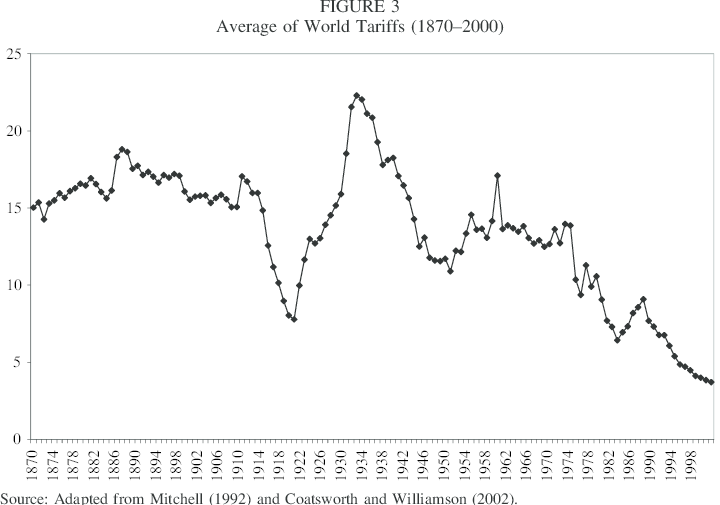
In this article, Annie YEUNG (ESSEC Business School, Global Bachelor in Business Administration (GBBA) – Exchange Student, 2025) explains about understanding how tariffs are crucial for consumers, suppliers, and policymakers.
Introduction: What are tariffs?
Tariffs is a tax that is placed on imported and exported goods, essentially, a duty on goods when they cross international borders. Tariffs are taxes that is imposed by a government, and they are often utilized by governments to protect domestic industries, raise government revenue, and influent foreign policy. Tariffs are always impacting global economies on a large scale, as the effect they bring are always to large bodies of consumers and suppliers internationally, especially if the tariffs are imposed by a country with large export or import volumes. Trade tariffs make a direct effect by making imported goods more expensive, and they can often shift increased consumptions towards domestically produced goods. Tariffs take effect by rendering international imported goods more expensive, which consumers would, due to effect of demand, increase their quantity demanded towards domestic goods. Hence, tariffs take effect in protecting domestically produced goods, and may achieve political goals. However, as prices are increased, consumers often need to pay a higher price, which this may lead to inefficiencies and deadweight loss; this may lead to trade disputes.
Evolution of tariffs

Source: Average of World Tariffs, Adapted from Mitchell (1992) and Coatsworth and Williamson (2002).
Different types of tariffs
Ad Valorem Tariffs
Ad Valorem Tariffs
An Ad Valorem Tariff is a tariff that is added onto the price of the imported good as a percentage. For example, an ad valorem tariff may be a 10 percent tax that is added onto the price of each good imported. Hence, an ad valorem tariff means that the more expensive a good is, the more tariff is added on. This may mean that higher valued imported goods are rendered much more expensive and takes greater effect as a result from the tariff.
Specific tariffs
Specific tariffs are tariffs that charges a fixed fee on the quantity or physical unit of the imported good. Hence, special tariffs are imposed on goods that are regardless of their price, and it would be a fixed fee that is imposed per physical unit of the imported good. For example, a specific tariff could be a $1 imposed on per kilogram of wheat that is imported wheat into the country. The economic impact are easier to administer and do not adjust with the market price of the good.
Compound tariffs
A compound tariff is a combination of both ad valorem and specific tariffs. Compound tariffs may include both an ad valorem tariff and a specific tariff combined to be imposed on an imported good.
Sliding Scale tariffs
Sliding scale tariffs are a variable tariff rate that are adjusted based on global commodity prices, domestic supply levels, inflation volatility etc. The tariff is dependent on when world prices of the good increases or rises. When world prices decrease, the sliding scale tariff increases, and when world prices increase, the tariff decreases. Hence, this tariff takes an economic effect by helping to maintain a minimum domestic price of a good, and helping to balance price stabilization. Hence, sliding scale tariffs may help stabilize domestic goods’ prices, and smooths the supply and demand for domestic goods, protecting domestic producers and reducing market volatility in face of global economic changes.
Protective tariffs
Protective tariffs take effect by protecting domestic industries from foreign competition. The goal of imposing a protective tariff is to encourage consumers to purchase more from domestic by raising the price of internationally imported goods. As a result, when demand for domestic goods increase as a result from protective tariffs, more domestic jobs can be created, and growth of local industries are secured, which exemplifies the protection for these domestic sectors.
Revenue tariffs
Revenue tariffs are tariffs to raise government revenue instead of protecting domestic producers. The purpose of imposing revenue tariffs is to generate an income for the government, especially when the country’s economic system heavily depends on imported goods and has a high volume of imported goods. However, revenue tariffs may be a great burden for domestic consumers as they bear the higher prices of goods, and may affect trade flows and consumption choices within the population, as consumers are the major price payers under a revenue tariff.
Economic Effects of Tariffs
Tariffs can create multidimensional impacts on the global economy both in short term and long term, and consumers, producers, governments, as well as international relations may all be affected. Hence, tariffs are a very important factor in influencing the international landscape and may cast a great effect on global economic markets.
The effect of tariffs on consumers
Tariffs firstly directly impacts consumers. When a government imposes tariffs, suppliers importing a good internationally will need to pay an extra cost to the government. As a result, this will raise prices of goods, reducing the purchasing power of consumers. Furthermore, as pries increase for imported goods, consumers may find more limited choices in the market, and this may lead to consumer dissatisfaction.
The effect of tariffs on domestic producers
Tariffs are generally casting a more beneficial effect for domestic producers as they often result in increased output and employment to domestic industries. With more demand turned to domestic producers, they may result in higher sales and revenue outputs, boosting the economic return for domestic producers. While tariffs may provide protection to domestic industries as they gain a price advantage over foreign producers, there may be reduced competition. Furthermore, domestic producers may also be harmed through tariffs if they rely on foreign inputs. For example, when domestic producers rely on imported raw materials, their input cost increases, and this may result in less profit earned.
The effect on governments and the international landscapes
Trade tariffs may generate positive impacts to governments, as trade tariffs may act as a channel for revenue generation. Governments also utilize trade tariffs for political goals, and may cast a strategic effect on trade negotiations and affect the economic diplomacy. Simultaneously, trade tariffs may manipulate trade flows, and cause dissatisfaction, as rising consumer prices may lead to domestic unrest and trade wars. When one country imposes a tariff, this may often provoke retaliation from other countries, leading to a spiral of protective tariffs, that rises global prices and slows global economies. Hence, tariffs can lead to trade wars and lead to geopolitical instability.
Why should I be interested in this post?
This post discusses how trade policies may affect all actors in the economy. Understanding tariffs help you understand global events, and this can influence your everyday life as well.
Related posts on the SimTrade blog
▶ Anant JAIN Hyperinflation In Argentina Since 2018: A Deep Dive Into The Economic Crisis
▶ Camille KELLER From bean to brew: understanding coffee as a global commodity
▶ Mathis DIALLO The price of cocoa
▶ Jorge KARAM DIB Explanations for the recent changes in the Mexican economic landscape
Useful resources
CEPR Trump’s China tariffs: Lessons from first principles of classic trade policy welfare analysis
Knowledge.deck Trade and Tariff Impact Analysis
Wall Street Journal Tariffs Are More Than Just Taxes. They Are a Tool of Geopolitics.
About the author
The article was written in July 2025 by Annie YEUNG (ESSEC Business School, Global Bachelor in Business Administration (GBBA) – Exchange Student, 2025).
